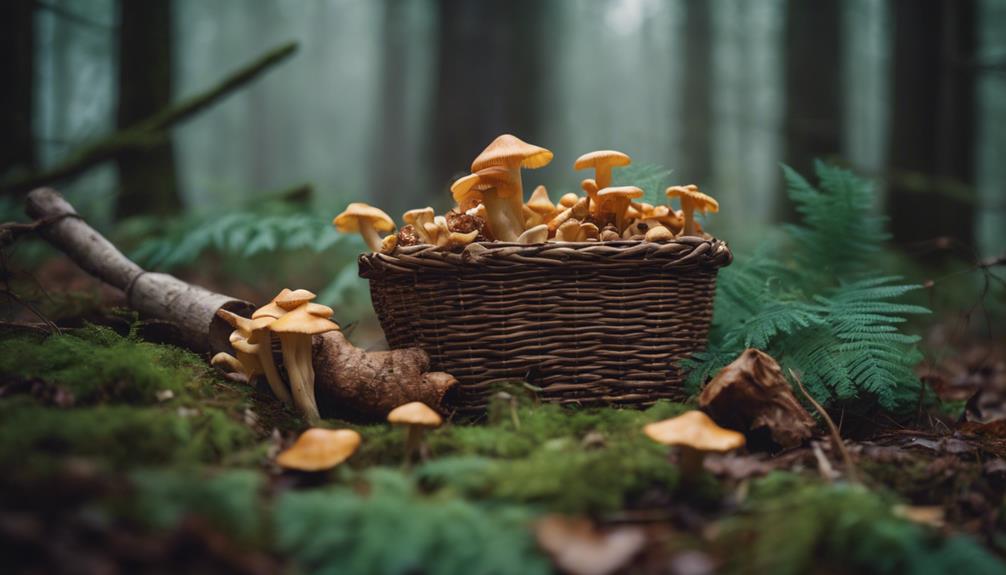To improve your foraging success, focus on weather cues like cloud cover and wind patterns. Overcast skies and calm winds usually mean animals and insects are more active, especially early or late in the day. Windy and clear conditions often send animals seeking shelter, reducing their visibility. By paying attention to these signs, you can better predict when and where to find food. Keep exploring to discover how these weather changes can enhance your foraging strategies.
Key Takeaways
- Overcast skies stabilize temperatures and boost animal activity, making foraging more successful.
- Calm winds help animals stay hidden and enhance scent dispersal, aiding in locating food sources.
- Cloud cover encourages early morning and late afternoon foraging, optimizing active periods.
- Windy, clear days cause animals to seek shelter, reducing foraging visibility and success.
- Monitoring weather patterns like cloud cover and wind helps predict animal behavior and improve foraging strategies.

Understanding how weather patterns influence foraging can substantially boost your success in gathering food. One of the most noticeable aspects of weather that affects wildlife activity is cloud cover. When the sky is overcast, animals often behave differently than on clear days. Cloudy conditions tend to keep the temperature more stable, which can encourage some creatures to stay active longer, especially in the early morning or late afternoon. For example, insects like bees and butterflies are more likely to be out collecting nectar when the sun isn’t blazing overhead, making it easier for you to spot them. Similarly, birds might not fly as high or as far, focusing their foraging near the ground or in sheltered areas. This means that during cloudy days, you could find more insects or ground-feeding birds, which are prime targets for gathering food. Additionally, the stability in temperature during overcast weather can reduce stress on animals, leading to increased activity levels.
Wind patterns also play a critical role in foraging success. Wind influences how animals hunt, how insects disperse, and even how plant scents travel through the air. When the wind is strong and steady, it can make it harder for smaller creatures to stay hidden or stable, pushing them to seek shelter. Conversely, gentle breezes can carry the aroma of food sources, such as flowering plants, further afield, signaling to you where to look. Wind can also affect the flight of birds and insects, either encouraging or discouraging activity. For example, insects like beetles and flies often prefer calm days—they’re less likely to be out during gusty conditions because they can’t control their movement well. If you notice a lull in wind, it’s often a good time to focus on areas where insects are likely hiding or resting.
Combining an understanding of cloud cover and wind patterns gives you a clearer picture of when and where animals will be actively foraging. On overcast days with calm wind, you might find more insects on low-growing plants or in shaded areas. Conversely, on windy, clear days, many creatures might seek shelter, making them less accessible. By observing these weather cues, you can anticipate animal behavior better and plan your foraging routes accordingly. Pay attention to how the sky looks and how the wind feels, and you’ll develop a sharper sense of the best times and places to gather food. Over time, this knowledge becomes second nature, allowing you to adapt your strategies and maximize your success, no matter what the weather throws your way. Recognizing weather-driven animal behavior can significantly improve your foraging efficiency and success rate.
Frequently Asked Questions
How Do Moon Phases Affect Foraging Conditions?
Moon phase effects influence your foraging by altering lunar illumination, which impacts animal activity. During a new moon, darkness prevails, making animals less active and harder to spot, so foraging might be tougher. Conversely, full moons provide more light, increasing animal movement and visibility. By paying attention to moon phases, you can time your foraging trips when lunar illumination encourages greater animal activity, boosting your chances of success.
What Specific Cloud Types Indicate Good Foraging Weather?
You should look for scattered cumulus clouds, which indicate fair weather and stable conditions ideal for foraging. These clouds often bring minimal cloud cover, allowing more sunlight and warmth, which encourages plant growth and insect activity. Watch for temperature fluctuations; steady temps suggest consistent weather, while sudden changes can disrupt foraging. Clear or partly cloudy skies with minimal high-altitude clouds are your best indicators for good foraging conditions.
How Does Wind Direction Influence Edible Plant Locations?
You should pay attention to wind patterns because they influence plant distribution. Winds from the south often carry moisture, encouraging lush growth of edible plants on the north-facing slopes. Conversely, dry winds from the north can lead to sparser plant life. By observing these wind directions, you can identify areas where edible plants are more likely to thrive and find abundant foraging spots.
Are There Seasonal Weather Patterns That Predict Mushroom Growth?
Yes, seasonal rainfall and temperature fluctuations predict mushroom growth. You’ll notice mushrooms thrive after periods of consistent rain, especially in cooler, damp months like fall and spring. Warm days with cooler nights encourage spore development, while dry spells slow growth. By observing these weather patterns, you can better time your foraging trips to find abundant, healthy mushrooms. Keep track of rainfall and temperature shifts to improve your success.
How Can Barometric Pressure Changes Signal Upcoming Foraging Opportunities?
Think of barometric pressure as your weather’s whisperer—its fluctuations tell you when the forest’s secret life awakens. As pressure drops, pressure fluctuations signal an upcoming rain, nurturing mushrooms to sprout. Rising trends often mean stable, dry weather ahead. By tracking barometric trends, you can anticipate foraging opportunities, knowing when the woods will be teeming with fungi, just waiting for you to uncover their hidden treasures.
Conclusion
As you step into the wild, the sky whispers secrets—soft breezes, shifting clouds, and distant rumbles hint at nature’s mood. By reading these signs, you become attuned to the land’s rhythm, guiding you to hidden treasures just beneath your fingertips. The morning’s dew, the fading sunlight—each detail fuels your intuition. Trust in these subtle cues, and you’ll find yourself seamlessly blending with the landscape, turning weather into your most reliable foraging partner.










